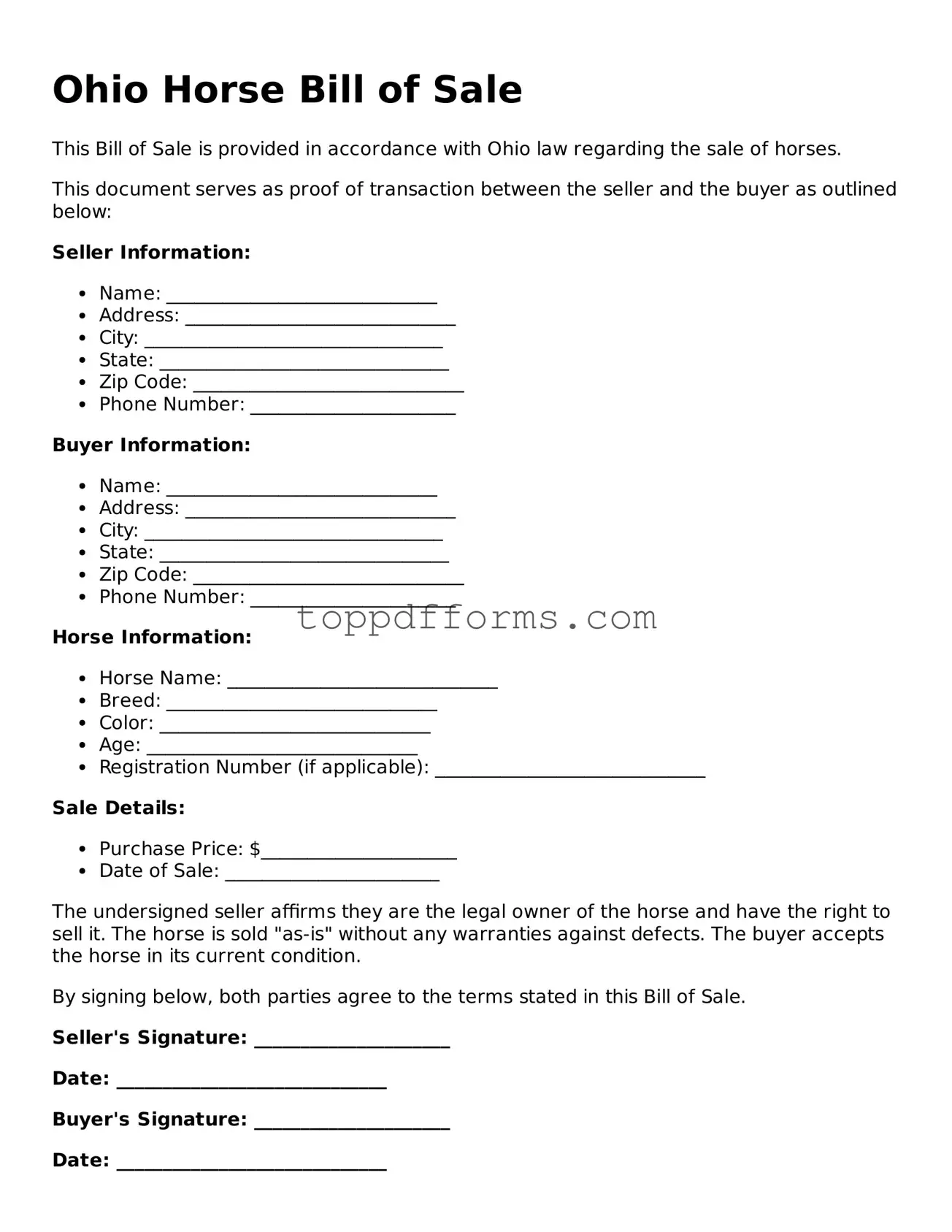When filling out the Ohio Horse Bill of Sale form, many people overlook essential details. One common mistake is not including the correct date of the sale. This date is crucial for both parties, as it establishes when the transaction took place. Without it, there could be confusion later on.
Another frequent error is failing to provide complete buyer and seller information. This includes full names, addresses, and contact numbers. Incomplete information can lead to issues if there are disputes or questions about the sale in the future.
Some individuals forget to accurately describe the horse being sold. This description should include the horse's name, breed, age, color, and any identifying marks. A vague description can create misunderstandings about what was sold.
Additionally, not specifying the sale price is a mistake that can complicate matters. The price should be clearly stated in the form. Leaving it blank or writing it in an unclear manner can lead to disputes later.
People often neglect to include any terms of sale. If there are specific conditions, such as whether the horse is sold "as is" or if there are any warranties, these should be clearly outlined. Failing to do so can result in differing expectations between the buyer and seller.
Another oversight is not having both parties sign the form. Both the buyer and seller must sign to validate the transaction. Without signatures, the document may not hold up if questioned.
Some individuals also forget to make copies of the completed form. Keeping a copy for personal records is essential. This can serve as proof of the transaction and help resolve any future issues.
Lastly, not checking for errors before submitting the form is a common mistake. Typos or incorrect information can create complications. Taking a moment to review the document can save time and hassle down the line.
